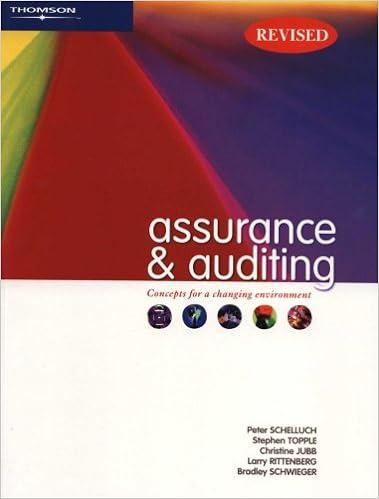Mini Case Your first assignment in your new position as assistant financial analyst at Caledonia Products is to evaluate two new capital-budgeting proposals. Because this is your first assignment, you have been asked not only to provide a recommendation but also to respond to a number of questions aimed at assessing your understanding of the capital-budgeting process. This is a standard procedure for all new financial analysts at Caledonia, and it will determine whether you are moved directly into the capital-budgeting analysis department or are provided with remedial training. The memorandum you received outlining your assignment follows: To: The New Financial Analysts From: Mr. V. Morrison, CEO, Caledonia Products Re: Capital-Budgeting Analysis Provide an evaluation of two proposed projects, both with 5-year expected lives and identical initial outlays of $110,000. Both of these projects involve additions to Caledonia's highly successful Avalon product line, and as a result, the required rate of return on both projects has been established at 12 percent. The expected free cash flows from each project are as follows: Initial outlay Inflow year Inflow year 2 Inflow year 3 Inflow year 4 Inflow year 5 Project A (110,000) 20,000 30,000 40,000 50.000 70,000 Project B (110,000) 40,000 40,000 40,000 40,000 40,000 In evaluating these projects, please respond to the following questions: a. Why is the capital-budgeting process so important? b. Why is it difficult to find exceptionally profitable projects? c. What is the payback period on each project? If Caledonia imposes a 3-year maximum acceptable payback period, which of these projects should be accepted? d. What are the criticisms of the payback period? e. Determine the NPV for each of these projects. Should either project be accepted? f. Describe the logic behind the NPV. g. Determine the PI for each of these projects. Should either project be accepted? h. Would you expect the NPV and Pl methods to give consistent accept/reject decisions? Why or why not? 1. What would happen to the NPV and PI for each project If the required rate of return increased? If the required rate of return decreased? J. Determine the IRR for each project. Should either project be accepted? k. How does a change in the required rate of return affect the project's internal You have also been asked for your views on three unrelated sets of projects. Each set of projects involves two mutually exclusive projects. These projects follow. I. Caledonia is considering two investments with 1-year lives. The more expensive of the two will produce more savings. Assume these projects are mutually exclusive and that the required rate of return is 10 percent. Given the following free cash flows: Initial outlay Inflow year 1 Project A Project B (195,000) (1,200,000) 240,000 1,650,000 1. Calculate the NPV for each project. 2. Calculate the Pl for each project. 3. Calculate the IRR for each project. 4. If there is no capital-rationing constraint, which project should be selected? If there is a capital-rationing constraint, how should the decision be made









